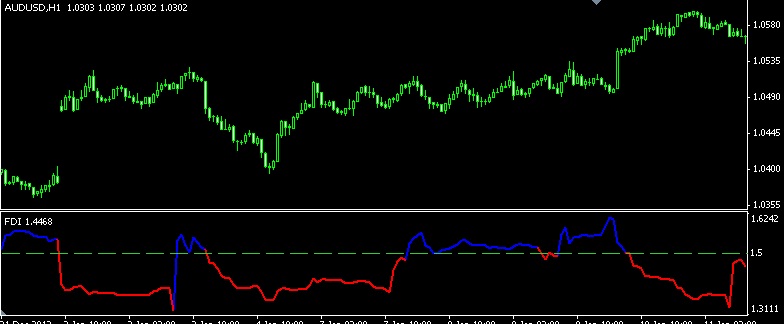Rounding Top and Rounding Bottom are two popular chart patterns often used by technical traders. They could provide insightful signals for a reversal strategy.
Technical analysis is an attractive way to serve as the basis of one's trading strategy. Many traders like to use technical analysis because it provides insight into the current psychological situation of the market by analyzing the price trends and charts. It's about finding patterns in the seemingly random market movements and using them to capture valuable trading opportunities. There are many chart patterns that can be used, among which are Rounding Top and Rounding Bottom.

Rounding Top and Rounding Bottom are two of the most popular chart patterns that are commonly used to identify price reversals. These patterns can be found in almost all time frames whether it's monthly, weekly, or daily, as well as a variety of asset classes.
Contents
Defining Rounding Top and Bottom Patterns
The Rounding Top and Bottom chart patterns can be identified as the U-shaped reversal chart patterns. Rounding Top has an inverted U-shaped that looks like a dome while Rounding Bottom has a normal U-shaped. Both of these patterns typically occur at the end of an extended trend, so technical traders often identify them as a sign of price reversal.
If the price is increasing and going upwards, the Rounding Top pattern predicts that the price will reach its climax before it reverts back to the downside. The dome-shaped arc that we see indicates the high that limits the price during an uptrend.
See Also:
On the other hand, if the price is decreasing or going downwards, the Rounding Bottom pattern predicts that the price will hit a rock bottom before it reverts to an uptrend. The arc essentially follows the downward trend and forms a basis for a bounce, which indicates a bullish reversal. Therefore, the arc would be shaped like the letter "U".

In a nutshell, Rounding Top and Rounding Bottom patterns work in the same principle. The underlying theory and the way to identify them are exactly the same, except that they are the inverse of each other. Both Rounding Top and Bottom trail the price at the end of a trend and create a period of sideway movements before finally reverting to the opposite direction of the initial trend. By measuring the difference between the limit reached and the trend reversal point, you can determine your trade entry, stop loss placement, and take profit target.
Identifying Rounding Top and Bottom Patterns
For the Rounding Top pattern, there are three main components that you need to find:
- Initial upward trend: the Rounding Top pattern arc begins with an existing uptrend. This shows that the asset demand is currently high, hence the fast increase of the price.
- Rounding Top section: the initial uptrend is followed by a weakening momentum, thereby forming a sideway section. At this point, the price failed to form new highs, indicating a reversal.
- New Downtrend: the final section of the Rounding Top arc is the tapering prices that form the end of the rounding section. As the price begins to decline, the traders who are holding the asset start to sell it at a lower price, causing the emergence of a new downtrend. When the price hits the same horizontal level as the starting point, it marks the successful completion of the pattern.
A Rounding Bottom basically looks like a Rounding Top pattern flipped horizontally. A Rounding Bottom is also made of three important elements, namely:
- Initial downward trend: similar to the Rounding Top pattern, the beginning of the Rounding Bottom arc is also marked with an existing trend. However, the trend that we should see here is a downtrend instead of an uptrend.
- Rounding Bottom section: as the price loses momentum, it's starting to move slower. This eventually results in the forming of a U-shape formation on the chart. This then makes the rounding bottom section of the pattern.
- New uptrend: as the final section of the Rounding Bottom pattern, the price starts to move upward and complete the U-shape. This shows that there's a new uptrend on the chart and the pattern is completed.
See Also:
How to Use Rounding Patterns
Long Trade Strategy
To do long trade, we're going to be using the Rounding Bottom pattern. Here is the step-by-step guide that you could follow:
- There must be a prior downtrend for the pattern to develop.
- There's a group of lows in the following manner: a set of lows, followed by a set of lower lows, and finally higher lows (indicating downtrend exhaustion).
- Watch for a break in the neckline by at least 3% penetration on the long-term chart or two successive candles that close above the neckline on the daily chart.
- Set the buy order after the neckline is tested by the first pullback.
- Place a stop loss below the neckline and a profit target at an area of the previous resistance, above the neckline.

From the chart above, we can see that there are a few sets of lows happening before a higher set of lows occur. Draw a horizontal line that runs parallel from the start of the first neckline to the closing curve. The moment the price breaks above the resistance level, place the buy order in a hope that the price will continue to rise. Then draw another line that starts at the price's previous high and extend it to the right. This is where you should place the take profit target as your exit point.
It's worth mentioning that some traders like to put stop loss exactly at the support/resistance level, but this is actually not recommended because oftentimes, the price only retests these levels. By putting the stop loss exactly at these key points, there's a risk that you will be taken out of your trade too early.
Short Trade Strategy
In contrast, short trades are made by using the Rounding Top pattern. Here is the setup that you need to complete:
- There must be a prior uptrend for the pattern to form.
- There's a set of highs followed by some lower highs (indicating uptrend exhaustion).
- Keep an eye out for a break in the neckline by at least 3% penetration on the long-term chart or two successive candles with a closing price located below the neckline on the daily chart.
- Open a sell order once the neckline is retested by the first pullback.
- Place a stop loss above the neckline and set a profit target where the previous support occurs below the neckline.

On the chart above, the sell position is not placed on the first pullback because the price forms a false break. In this case, you can prepare a pending order when the price breaks the neckline again.
Trading with Rounding Patterns: Pros and Cons
Similar to any other trading strategy, Rounding Top and Bottom patterns also have advantages and disadvantages that you should know beforehand. Firstly, the strategy is considered pretty simple and easy to learn, even for beginners. Since Rounding Top and Bottom patterns can be used in most time frames and across various tradable assets, they are also highly flexible for any kind of trader. In addition, the patterns have also been found to be quite reliable at informing signals.
However, it's undeniable that these patterns might take a long time to develop, especially for traders who use big time frames. Also, it might be hard to identify the exact breakout points for these patterns. Other than that, Rounding Top and Rounding Bottom can also be confused with other similar patterns like Head and Shoulders or the Cup and Handle pattern.
The Bottom Line
Using the Rounding Top and Bottom patterns is pretty simple, although it's not exactly easy to master in a short time. However, like any other method, these patterns are never 100% reliable. This is why it's important to have a sound trading strategy before entering the actual market. It's even better to combine this pattern with other trading indicators to give further confirmations to the signals.
Some of the tools that you can use are Japanese candlestick patterns, momentum indicators, and volatility indicators. And since these patterns might take a while to develop, other than knowledge and experience, you also need to be patience in waiting for the right signal to enter the market.


 Dedicated FREE FOREX VPS
Dedicated FREE FOREX VPS Free FOREX Virtual Private Server
Free FOREX Virtual Private Server MT4 Demo Contest, Get $500
MT4 Demo Contest, Get $500 Sign Up for an Account, Claim 60% Deposit Bonus
Sign Up for an Account, Claim 60% Deposit Bonus Free MT4/MT5 VPS 2024
Free MT4/MT5 VPS 2024 Send E-mail and Get Free Merchandise
Send E-mail and Get Free Merchandise $1K Refer a Friend Bonus for Pepperstone Pro clients
$1K Refer a Friend Bonus for Pepperstone Pro clients Maximize Your Earnings with 100% Deposit bonus
Maximize Your Earnings with 100% Deposit bonus Trade to Win, $5,000 Monthly Demo Contest
Trade to Win, $5,000 Monthly Demo Contest Claim 30% + 15% Deposit Bonus from LiteFinance
Claim 30% + 15% Deposit Bonus from LiteFinance



















